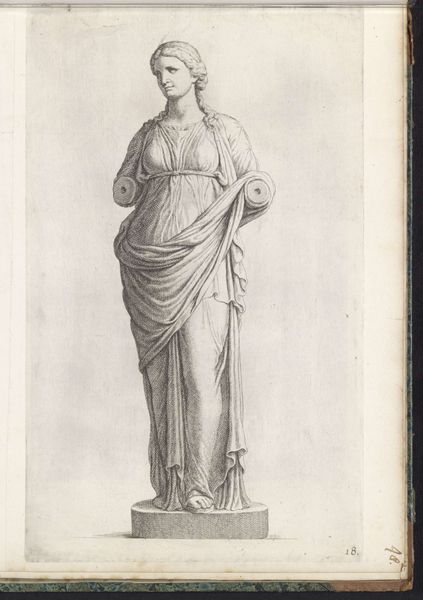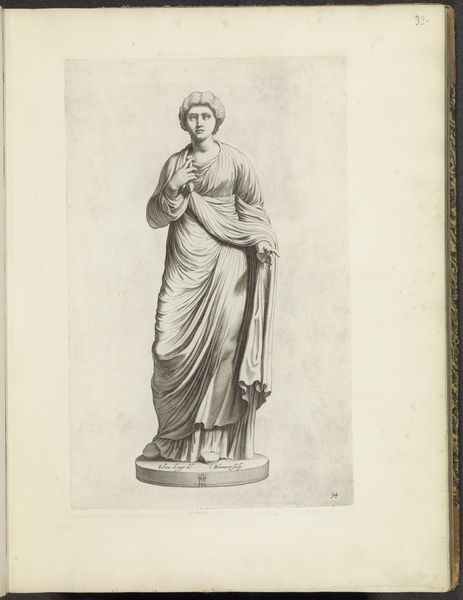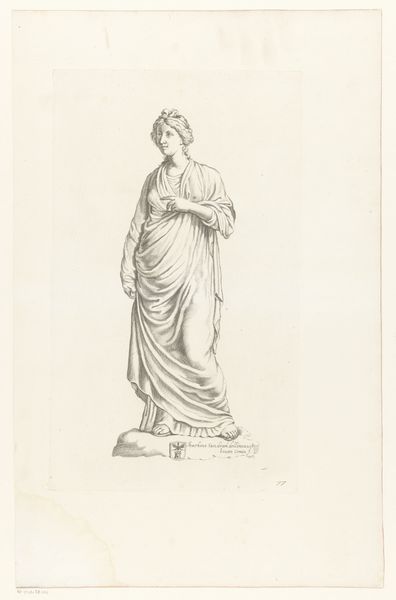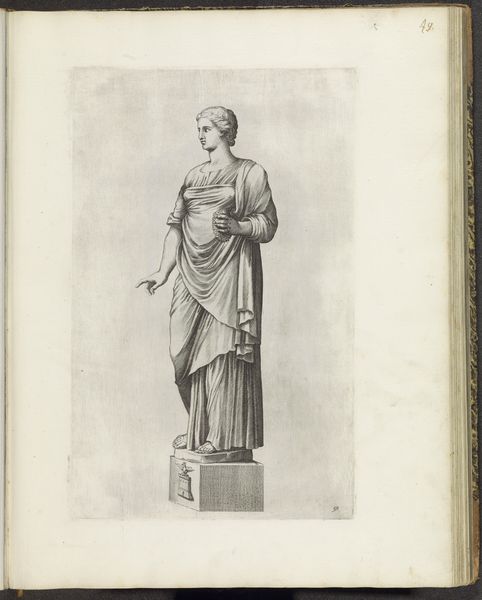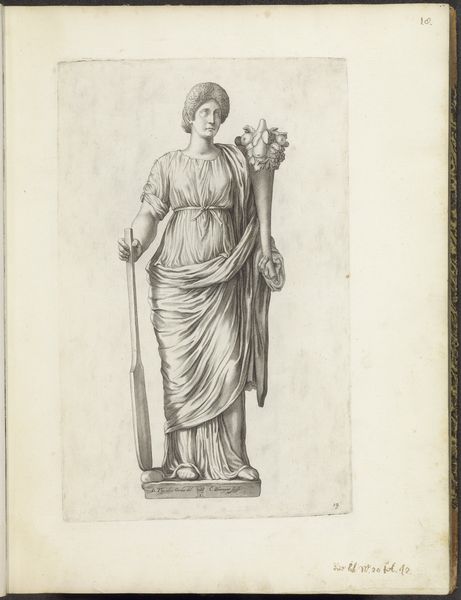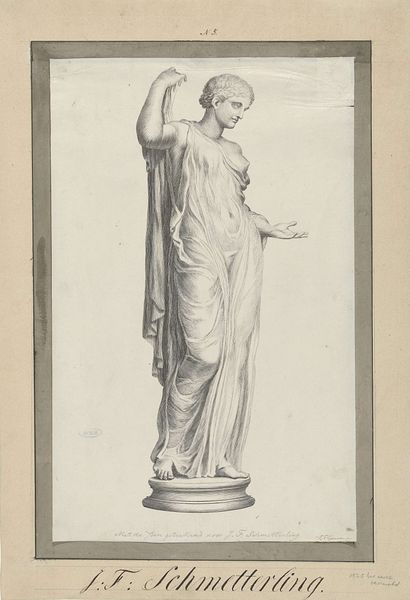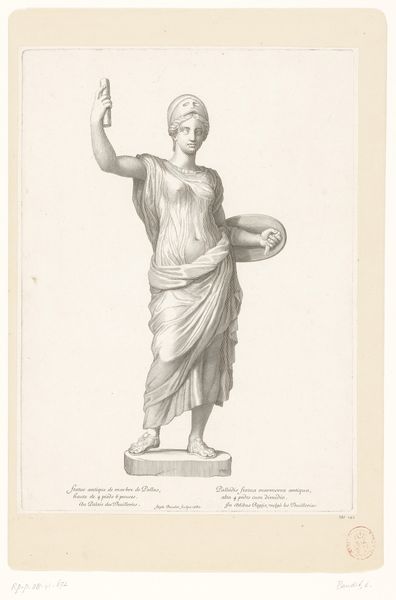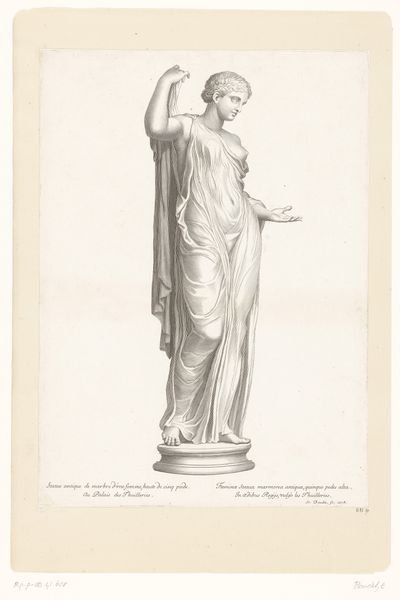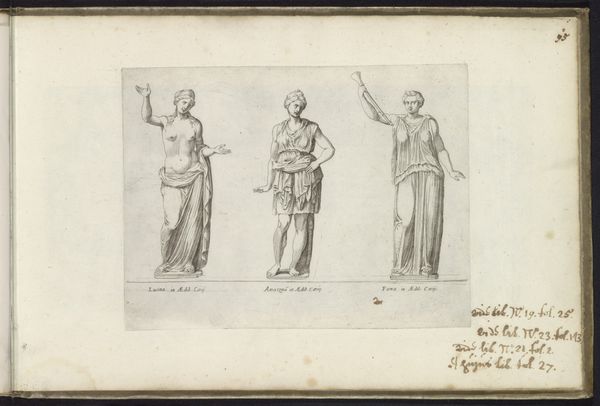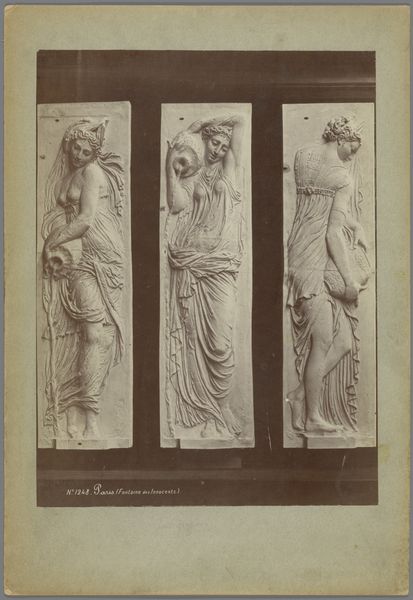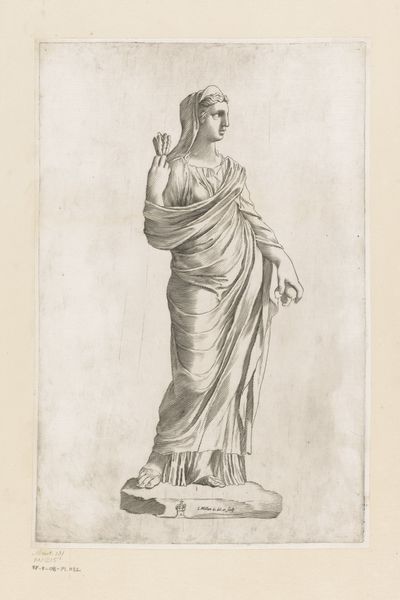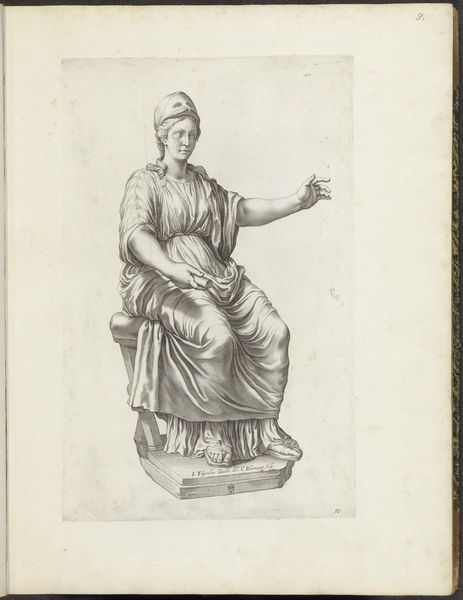
Design: Draped Figures, from Encyclopédie 1762 - 1777
0:00
0:00
drawing, print, etching, paper, engraving
#
drawing
#
neoclacissism
# print
#
etching
#
figuration
#
paper
#
history-painting
#
engraving
Dimensions: 322 × 210 mm (image); 350 × 225 mm (plate); 400 × 260 mm (sheet)
Copyright: Public Domain
Curator: This print, entitled "Design: Draped Figures, from Encyclopédie," was created by Benoit Louis Prevost sometime between 1762 and 1777. Editor: It's a striking work. The figures have such presence, such... dignity. The etched lines create a remarkable texture, especially in the drapery. Curator: Indeed. The work's title gives us a key point of access. This wasn’t intended as a stand-alone artwork but a study of drapery techniques for the famous "Encyclopédie" of Diderot and d’Alembert, a massive Enlightenment-era project that aimed to codify all human knowledge. Consider the socio-political context: the burgeoning middle class, the thirst for knowledge, the drive to categorize and understand the world. These images empowered artisans, connecting their labor to intellectual movements. Editor: Absolutely, I see how it fits into the encyclopedic project— a visual taxonomy of draping styles! It is an exemplary piece of Neoclassical printmaking. Look how the artist uses line to create volume and form, almost as though sculpting with ink. The composition emphasizes clarity and order, reflective of Enlightenment ideals. The choice of classical figures furthers the appeal to historical precedent, invoking a sense of timelessness. Curator: Yes, and by portraying these figures with specific draping, the image also tacitly reflects gender roles and the aesthetic expectations placed on women’s dress during this time. Editor: A fascinating point. I’m now seeing the image in a completely different light, recognizing how even seemingly technical drawings can encode cultural expectations. Curator: Precisely. This seemingly simple print embodies complex dynamics between knowledge dissemination, artistic technique, gendered representation, and broader socio-political movements. Editor: Thank you; this has truly transformed my perception of it! I initially responded to the pure, classical form of the image, but now recognize its social, historical and even political context.
Comments
No comments
Be the first to comment and join the conversation on the ultimate creative platform.
